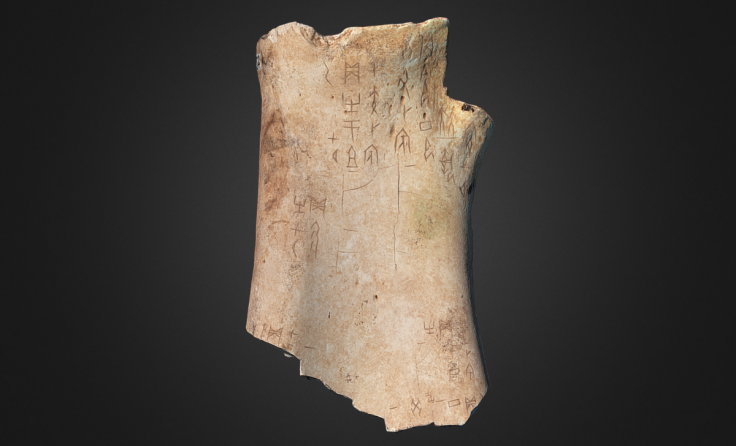3,000-year-old oracle bone 3D printed to shed light on life in ancient China

Researchers have created the world's first 3D printed replica of a Chinese oracle bone. The print is an exact copy of a 3,000-year-old bone, complete with inscriptions of ancient Chinese narratives.
The scientists, from Cambridge University, created the 3D copy of the bone to avoid damage to the original by mishandling. Researchers can now also examine the replica bone in more detail to get a better insight into life in ancient China.
Chinese oracle bones date back to nearly 3,500 years ago, and are the oldest surviving documents written in Chinese. Originally from the shoulder blade of an ox or tortoise shell, they were used by the Chinese to record life events on. This includes the recording of a lunar eclipse from the year 1192BC - one of the first ever recorded events of its type.
These bones were also used for divination, in attempts to see into the future. These markings were aimed at the writer's ancestors in hope that they would provide answers to their questions about the future.
Rituals would be performed while the markings were engraved. The diviner would mark the bone by using a red-hot brand and chanting to their ancestors. Animals would then be asked to be brought into the room and slaughtered as a sacrifice. They would then be dismembered, and their blood spread across the bone, before the chanting would continue.
The copied bone, known as Oracle Bone CUL.52, shows markings detailing the sacrifice of an ox to a royal ancestor.
Creating the world's first oracle bone replica
A printer at the Media Studio of Addenbrooke's Hospital was used to create the replica. The final product was made from 350 superimposed layers of fine plaster-powder, all locked together with a cyanoacrylate superglue.
The scientists have also replicated the bone online, and the 14cm-long oracle bone can be analysed by the public from 1.3 million different angles.
Charles Aylmer from Cambridge University said: "The reverse sides of the bones - which are crucial to understanding the process of divination, but have hitherto been neglected because of the difficulty of representing them adequately, can now be studied in detail thanks to this new technique."
He added: "To hold a 3D print of an oracle bone is a very special experience as it provides the same sensory impression as that obtained by the people who created them over three thousand years ago, but without the risk of harm to the priceless originals."
While this is just the first copy of an oracle bone, scientists from the University of Cambridge aim to print more replicas from their bone collection. Analysing the 600 bones they have stored in the library could offer more insights into early Chinese society.
© Copyright IBTimes 2024. All rights reserved.






